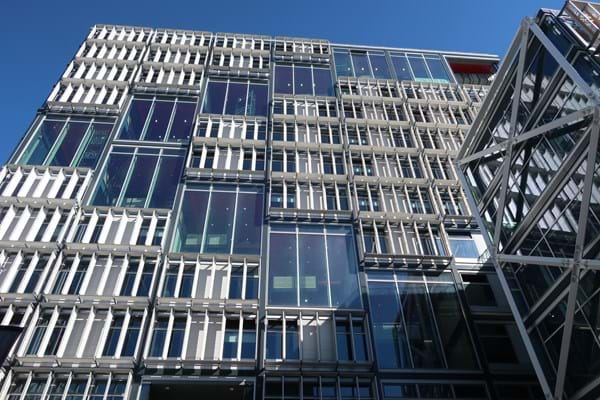LSE, Centre Building
London, UK
The Centre Building is the new home for the political sciences department of LSE providing a state of the art, flexible and highly sustainable academic and teaching building.
The multi-award winning project consists of interconnected 13-storey and six-storey towers, along with lecture theatres, study areas, academic staff offices and a series
of landscaped roof terraces as well as a new catering facility on the ground floor.
We secured this project through an international design competition win and were appointed to provide MEP, Environmental and Lighting Design services.
The new building has a simple and robust design combining the best elements of passive design with innovative and inventive MEP plant and controls, making it easy for users to adapt their individual environment on academic floors.
Passive design features include open circulation spaces on lower levels, narrow floor plates for daylight and ventilation, an atrium with roof vents to enhance air movement and provides the opportunity for the user to change their surrounding environment.
The result is that more than 60% of the total building area is designed as fully naturally ventilated while only 15% as fully mechanically ventilated. The remaining spaces are designed for mixed mode ventilation and can operate in either natural or mechanical mode depending on the occupancy and comfort requirements.
| Location | London, UK |
| Type | Education new build |
| Size/Area | 18,000m2 |
| Our Role | MEP Consultant/ Environmental Consultant/ Lighting Consultant |
| 1. | Zero Carbon Building |
| 2. | Natural ventilation strategy |
| 3. | BREEAM 'Outstanding' |
| 4. | RIBA Design Competition |
| Client | London School of Economics |
| Architect | Rogers Stirk Habour + Partners |
| Structural Engineer | AKT II |
| Project Manager | Deloitte |
| Cost Consultant | Deloitte |
| Main Contractor | Mace |

Julian Robinson, Director of Estates, London School of Economics“We are a world class university and the Centre Buildings Redevelopment will provide a new building and public spaces which will reflect this. Its sustainable design will complement and enhance our surroundings while still being uniquely identifiable as LSE.”




